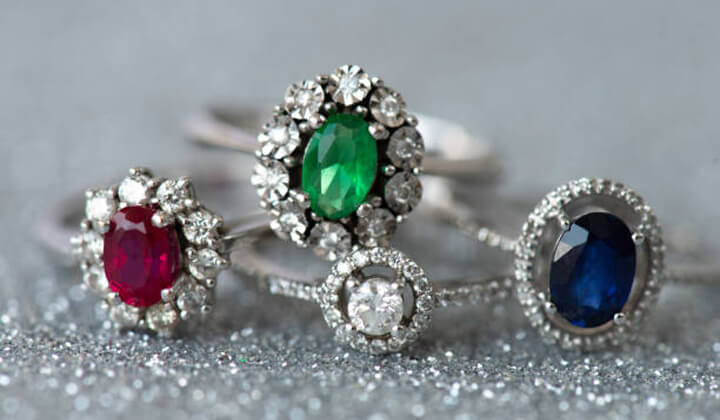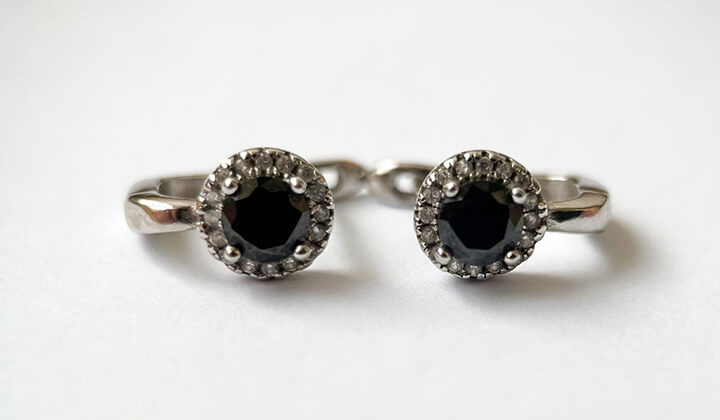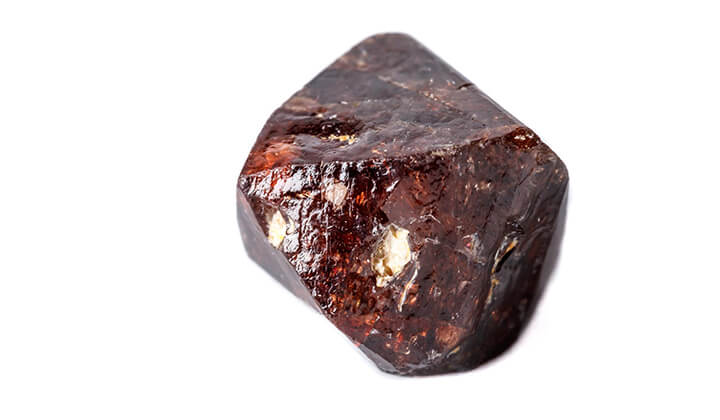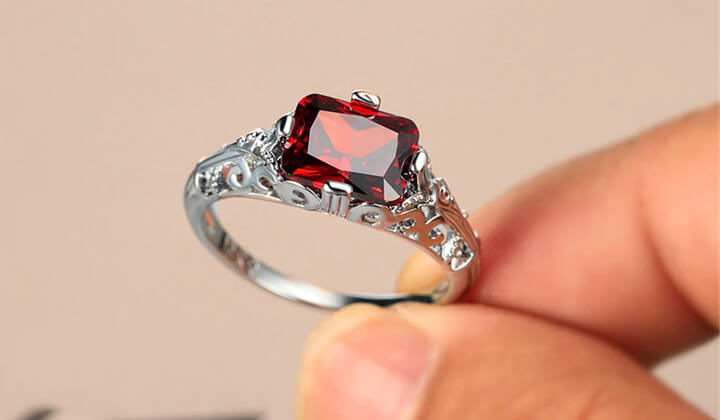Everything you need to know about Zircon Gemstone
Zircon is recognized for its brightness and bursts of multicoloured light, collectively called fire. As a result of their similarity to diamonds, zircon has been mistaken for the more expensive gem for millennia.

Zircon may be found in many different hues. Its yellow, green, red, reddish brown, and blue colours make it popular among collectors and customers who are knowledgeable about art.
Description
Zircon, which naturally occurs in a colourless variety, is prized for its dazzling fire. Unfortunately, these two zircon characteristics are so similar to diamonds that they've been blamed for centuries of mistakes.
Zircon may be found in many different hues. Collectors and savvy shoppers like it for its beautiful range of colours, including yellow, green, red, reddish brown, and blue.
Zircon crystals have numerous visual and physical qualities and may form in many kinds of rock.
Green zircons generally have lower values for these characteristics than other zircon colours. This is because researchers have shown that radioactive elements, common in zircon as impurities, have severely destroyed the crystal structure of these jewels over extended periods of geological time.

In the eyes of certain gemologists, zircons have three distinct qualities: high, midrange, and low. In addition, the degree to which radiation has damaged a zircon's crystal structure determines how the mineral is categorized.
Zircons classified as high or normal have complete crystal structures that radioactive elements have mostly unaltered. For this reason, they exhibit the typical mineral's physical and visual characteristics.
Radioactive elements have damaged the structure of intermediate and medium zircons. They have intermediate physical and optical qualities, falling between those of high and low kinds.
When radioactive elements damage the crystal structure of zircons, the resulting zircons have significantly diminished optical and physical qualities. Because they lack a regular crystal structure, they are considered amorphous at their most disordered.
High-quality zircons are almost exclusively mined for use in jewellery. Intriguingly, zircon's crystal structure can be partially restored by heating it to high temperatures after radiation damage. In addition, the stone's crystal structure may be restored by heating it to a very high temperature.
Facts
| Birefringence | Colours | Crystallography |
| Varies by the amount of radioactive damage—0 (isotropic)-0.059. See "Varieties" for more information. | Reddish brown, yellow, grey, green, red; various other colours induced by heating. | Tetragonal. Crystals are prismatic, pyramidal; often twinned; rounded pebbles. |
| Birthstone | Cleavage | Dispersion |
| December | Imperfect | 0.039 for all zircon types |
| Enhancements | Formula | Fracture |
| Virtually all blue zircon is heat treated. | ZrSiO4 + Fe, U, Th, Hf | Conchoidal |
| Etymology | Inclusions | Occurrence |
| The Arabic zargun, the Persian zar for "gold", and the gun for "colour." The name is ancient. | Angular zoning and streaks are sometimes seen in the common type. Some silk is seen occasionally, as well as tension and epigenetic cracks stained with iron oxides. Metamict pieces may have bright fissures known as angles. | In igneous rocks worldwide, especially granites. Also found as alluvial material. |
| Fracture Luster | Hardness | Heat Sensitivity |
| Vitreous to subadamantine | 6 (Low), 7.5 (High) | None |
| Luminescence Present | Luminescence Type | Lustre |
| Yes | Fluorescent, Phosphorescent, UV-Long, UV-Short, X-ray Colors | Vitreous to adamantine; sometimes greasy. |
| Optic Sign | Optics | Phenomena |
| Uniaxial+ | Uniaxial (+) | Chatoyancy, rare |
| Pleochroism | Refractive Index | Special Care Instructions |
| Distinct in blue stones: deep sky blue/colourless to yellowish grey. Red: red/clove brown. Brown: reddish brown/yellowish brown. | Varies by the amount of radioactive damage to its crystal structure. Low (most damaged): 1.78 - 1.85; Intermediate: 1.85 - 1.93; High (least damaged): 1.92 - 2.01. See "Varieties" for more information. | Facet edges wear off. Use protective settings for ring use. |
| Polish Luster | Specific Gravity | Transparency |
| Vitreous to adamantine | Low 3.95-4.20, Intermediate 4.08-4.60, High 4.60-4.80 | Transparent to opaque. |
| Typical Treatments | Varieties | Variety of |
| Heat Treatment | Hyacinth, Starlite | Best Known Gemstones |
History
Despite its widespread notoriety, few individuals have seen a zircon. The widespread usage of colourless zircon as a diamond substitute in the early 20th century is largely responsible for this.
More convincing lookalikes have long since filled the function they formerly played, but its name is still synonymous with "imitation" in the minds of many. This is a shame since zircon is a lovely coloured stone with its unique history and allure.

This diamond was prized in the Middle Ages for its purported ability to produce wealth, honour, and intelligence, promote a restful night's sleep, and ward off bad spirits.
Several researchers have hypothesized that the Arabic word zarkun, meaning "cinnabar" or "vermilion," is the source of the stone's name. Some have speculated that it comes from the Persian term zargun, meaning "gold tinted." Zircon may be found in a wide variety of colours. Thus either origin is plausible.
During the Victorian era, blue zircon was a popular choice for jewellery. Fine gems were often included in 1880s English estate jewellery.
Tiffany's famous gem buyer, gemologist George Kunz, strongly supported zircons. To highlight the gem's fire qualities, he once suggested the term "Starlite." But, unfortunately, no one ever used that moniker.
Zircon is a fascinating species due to its numerous unique qualities. As a diamond alternative, its high RI and dispersion appear inevitable.
However, an appropriately cut colourless zircon may surpass a poor diamond in terms of brilliance and seem almost identical to a real one. (Despite its reputation as a diamond alternative, zircon is rarer than diamond.)
Yet there is a limit to how far one can imitate. These gems might seem flat and lifeless if the cutting is subpar. Zircons aren't quite as hard as diamonds (10), but they still make excellent jewellery stones (6-7.5 on the Mohs scale).
In addition, their tenacity is far lower than that of most precious stones, making them easy to break. As a result, you should expect the faceted edges to chip and wear out quickly.
Zircons have a more pronounced birefringence than diamonds, the most noticeable visual distinction between the two (double refraction).
In contrast to diamonds, Zircons exhibit such pronounced birefringence that gem cutters must align the stone's table with the optic axis. If not, the interior could seem distorted because of the duplication of images at the facets.
Stone Sizes
Spectacular zircon stones may be found in the gem gravels of Southeast Asia.
- According to the Smithsonian Institution in Washington, DC, the following colours represent Sri Lanka: 118.1 (brown), 97.6 (yellow-brown), 75.8 (red-brown), 64.2 (brown), Thailand, 23.5 (green), 23.9 (colourless), and 103.2 (blue, Thailand).
- The colours blue (44.27), gold (22.67), red (14.34), and orange (21.32) are on display at the Geology Museum in London (white).
- Brown = 23.8; blue = 17.80; total = 61.69 at the Royal Ontario Museum in Toronto, Ontario, Canada (blue, step-cut).
- The American Museum of Natural History in New York has 208 exhibits (greenish blue, Sri Lanka).

Stone Care
Zircons are fragile and need to be handled with care. Ring stones need secure enclosures to prevent damage. Aside from that, zircon jewellery should be saved for special occasions. Refer to this piece for advice on picking zircons and other delicate gems for the centre stones of your engagement ring.
Expert bespoke recutting may be necessary for poorly cut zircons. Check out the before and after pictures of recut and repaired zircons in this post on jewellery.

While most zircons are completely safe for jewellery use, the common and metamict varieties may contain trace amounts of radioactivity due to their composition. Therefore, gem cutters should test them for radioactivity before dealing with zircons.
Zircons are very fragile. Thus mechanical devices, such as ultrasonic cleaners, should never be used to clean them. Instead, try using a gentle brush, warm water, and a light detergent.
FAQs
What is so special about zircon?
Zircons are so long-lasting and resistant to chemical assault that they may be found almost everywhere. Tree-like growth rings of extra zircon formed around the original crystal are a possible record of the various geologic events that the crystal withstood.
Is zircon rarer than a diamond?
It is far rarer than diamonds yet has a significantly lower price tag. As far as natural gems go, zircon is the one that most closely resembles diamonds. It has a glimmer that rivals a diamond because of its better shine and powerful fire.
How can you tell if zircon is real?
The birefringence of a zircon, often used as a diamond replacement, is the most reliable indicator that one is dealing with a zircon rather than a real diamond. The strong birefringence of zircon creates an appearance of cloudiness in this 4.57-carat round brilliant-cut stone.
Who should wear zircon?
In addition to those born under the sign of Taurus, natives of Cancer and Libra are also said to benefit from wearing zircon. It is also possible for zodiac individuals to wear this gem if Venus is in a favourable position in their horoscope. This precious stone may be worn by a guy experiencing difficulties in his marriage.
